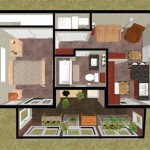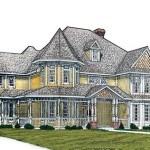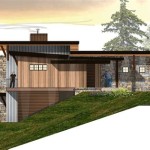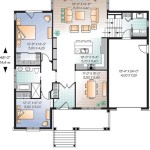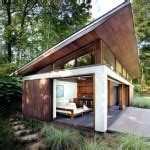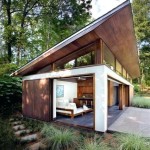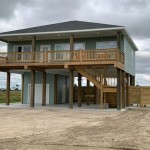Gothic House Plans refer to architectural designs inspired by the Gothic architectural style, prevalent during the Middle Ages. These plans incorporate characteristic elements of Gothic architecture, such as pointed arches, ribbed vaults, and stained glass windows, to create a sense of grandeur and mystery.
Gothic House Plans find application in the construction of residential dwellings, with homeowners seeking to evoke the charm and elegance of medieval aesthetics. An example of a Gothic House Plan can be seen in the design of the Winchester Mystery House in San Jose, California, known for its labyrinthine layout and intricate Gothic features.
In this article, we will delve deeper into the distinctive elements of Gothic House Plans, exploring their historical roots and modern interpretations. We will also provide practical considerations and tips for incorporating Gothic design principles into your home.
Gothic House Plans are characterized by a number of key features:
- Pointed arches
- Ribbed vaults
- Stained glass windows
- Flying buttresses
- Gargoyles
- Asymmetrical facades
- Turrets
- Elaborate ornamentation
- Dark color schemes
- Medieval influences
These elements combine to create a sense of grandeur, mystery, and historical charm.
Pointed arches
Pointed arches are one of the most distinctive features of Gothic architecture. They are formed by two curves that meet at a point at the top of the arch. This shape creates a sense of height and drama, and it is often used to create grand entrances and windows.
Pointed arches were first used in the early Gothic period, and they quickly became a popular feature of Gothic architecture. They were used in a variety of buildings, from churches and cathedrals to castles and manor houses. Pointed arches were also used in secular buildings, such as town halls and guildhalls.
The use of pointed arches in Gothic architecture was a major departure from the rounded arches that were used in Romanesque architecture. Pointed arches are more structurally efficient than rounded arches, and they can be used to create larger and taller buildings. They also create a sense of verticality, which is characteristic of Gothic architecture.
Pointed arches are often decorated with elaborate carvings and moldings. These decorations can be used to create a variety of effects, from simple elegance to over-the-top opulence. Pointed arches are a key element of Gothic architecture, and they continue to be used in modern buildings to create a sense of grandeur and drama.
Ribbed vaults
Ribbed vaults are another important feature of Gothic architecture. They are formed by a series of ribs that cross over each other to create a vault. The ribs are usually made of stone, and they are supported by columns or piers. The spaces between the ribs are filled with thin panels of stone or glass.
Ribbed vaults were first used in the early Gothic period, and they quickly became a popular feature of Gothic architecture. They were used in a variety of buildings, from churches and cathedrals to castles and manor houses. Ribbed vaults were also used in secular buildings, such as town halls and guildhalls.
The use of ribbed vaults in Gothic architecture was a major departure from the barrel vaults that were used in Romanesque architecture. Ribbed vaults are more structurally efficient than barrel vaults, and they can be used to create larger and taller buildings. They also create a sense of verticality, which is characteristic of Gothic architecture.
Ribbed vaults are often decorated with elaborate carvings and moldings. These decorations can be used to create a variety of effects, from simple elegance to over-the-top opulence. Ribbed vaults are a key element of Gothic architecture, and they continue to be used in modern buildings to create a sense of grandeur and drama.
- Structural efficiency: Ribbed vaults are more structurally efficient than barrel vaults. This is because the ribs carry the weight of the vault, while the thin panels between the ribs are simply infill. This allows for the creation of larger and taller buildings.
- Verticality: Ribbed vaults create a sense of verticality, which is characteristic of Gothic architecture. This is because the ribs point upwards, drawing the eye towards the heavens.
- Aesthetics: Ribbed vaults are often decorated with elaborate carvings and moldings. These decorations can be used to create a variety of effects, from simple elegance to over-the-top opulence.
- Versatility: Ribbed vaults can be used in a variety of buildings, from churches and cathedrals to castles and manor houses. They can also be used in secular buildings, such as town halls and guildhalls.
Ribbed vaults are a key element of Gothic architecture, and they continue to be used in modern buildings to create a sense of grandeur and drama.
Stained glass windows
Stained glass windows are a defining feature of Gothic architecture. They are made by assembling pieces of colored glass into a design, and then binding them together with lead came. Stained glass windows were first used in the early Gothic period, and they quickly became a popular feature of Gothic architecture. They were used in a variety of buildings, from churches and cathedrals to castles and manor houses. Stained glass windows were also used in secular buildings, such as town halls and guildhalls.
Stained glass windows served a number of purposes in Gothic architecture. They were used to create a sense of awe and wonder in religious buildings. They were also used to tell stories and to teach religious lessons. In secular buildings, stained glass windows were used to create a sense of grandeur and to display the wealth and power of the owner. Stained glass windows are a key element of Gothic architecture, and they continue to be used in modern buildings to create a sense of beauty and drama.
Stained glass windows are made using a variety of techniques. The most common technique is the lead came method. In this method, pieces of colored glass are cut to shape and then bound together with lead came. The lead came is then soldered together to create a strong and durable window. Other techniques for making stained glass windows include the copper foil method and the dalle de verre method.
Stained glass windows can be used in a variety of ways in Gothic House Plans. They can be used to create stunning focal points in a room, or they can be used to create a sense of privacy. Stained glass windows can also be used to create a variety of moods, from serene and peaceful to dramatic and awe-inspiring.
Benefits of stained glass windows in Gothic House Plans:
- Beauty and aesthetics: Stained glass windows are beautiful and can add a touch of elegance to any home. They can be used to create a variety of moods, from serene and peaceful to dramatic and awe-inspiring.
- Natural light: Stained glass windows allow natural light to enter a room, while still providing privacy. This can help to create a bright and airy space.
- Energy efficiency: Stained glass windows can help to reduce energy costs by providing natural insulation. This is because the stained glass helps to block out heat in the summer and cold in the winter.
- Historical value: Stained glass windows can add historical value to a home. They can be a reminder of the past and can help to connect a home to its history.
Considerations for using stained glass windows in Gothic House Plans:
- Cost: Stained glass windows can be expensive to purchase and install. However, they can also add value to a home.
- Maintenance: Stained glass windows require regular maintenance to keep them in good condition. This includes cleaning and repairing the glass and the lead came.
- Style: Stained glass windows should be chosen to complement the style of the home. Gothic House Plans typically feature pointed arches and ribbed vaults, so stained glass windows with similar shapes will complement the overall design.
Stained glass windows are a beautiful and unique addition to any Gothic House Plan. They can add beauty, privacy, and natural light to a home. However, it is important to consider the cost, maintenance, and style of stained glass windows before making a decision.
Flying buttresses
Flying buttresses are one of the most distinctive features of Gothic architecture. They are external supports that are used to transfer the weight of the roof and walls to the ground. Flying buttresses are made of stone, and they are typically composed of two parts: a lower arch that is supported by a pier or column, and an upper arch that is connected to the wall of the building. The upper arch is usually supported by a pinnacle, which is a small turret that helps to distribute the weight of the buttress.
Function of flying buttresses
Flying buttresses serve an important structural function in Gothic architecture. They help to support the weight of the roof and walls, which allows for the creation of larger and taller buildings. Flying buttresses also help to distribute the weight of the building more evenly, which reduces the risk of collapse. In addition, flying buttresses can help to protect the walls of the building from wind and other environmental forces.
History of flying buttresses
Flying buttresses were first used in the early Gothic period, and they quickly became a popular feature of Gothic architecture. They were used in a variety of buildings, from churches and cathedrals to castles and manor houses. Flying buttresses were also used in secular buildings, such as town halls and guildhalls.
Examples of flying buttresses
Some of the most famous examples of flying buttresses can be seen in the great Gothic cathedrals of Europe. The Notre Dame Cathedral in Paris is a particularly good example of the use of flying buttresses. The cathedral has a total of 28 flying buttresses, which help to support the weight of the massive roof and walls. Another famous example of flying buttresses can be seen in the Westminster Abbey in London. The abbey has a total of 10 flying buttresses, which help to support the weight of the central tower and the nave.
Modern use of flying buttresses
Flying buttresses are still used in modern architecture, although they are more commonly used in a decorative capacity than a structural one. Flying buttresses can be seen in a variety of modern buildings, from churches and cathedrals to office buildings and museums.
Gargoyles
Gargoyles are grotesque creatures that are often found on the exterior of Gothic buildings. They are typically depicted as having animal-like features, such as the head of a lion or the wings of a bat. Gargoyles are often used as waterspouts, and they are designed to channel rainwater away from the building. However, gargoyles also serve a symbolic purpose. They are thought to ward off evil spirits and to protect the building from harm.
Gargoyles were first used in the early Gothic period, and they quickly became a popular feature of Gothic architecture. They were used in a variety of buildings, from churches and cathedrals to castles and manor houses. Gargoyles were also used in secular buildings, such as town halls and guildhalls.
The use of gargoyles in Gothic architecture was likely influenced by a number of factors. One factor was the belief that grotesque creatures could ward off evil spirits. Another factor was the desire to create a sense of awe and wonder in religious buildings. Gargoyles were also used to add a touch of whimsy to Gothic buildings.
Gargoyles are often depicted as being grimacing or snarling. This is likely because they were meant to be fearsome and intimidating. However, some gargoyles are also depicted as being humorous or playful. This suggests that the use of gargoyles was not always meant to be serious.
Gargoyles are a unique and fascinating feature of Gothic architecture. They are a reminder of the beliefs and values of the people who built these buildings. Gargoyles also add a touch of beauty and whimsy to Gothic buildings.
Types of gargoyles
There are many different types of gargoyles. Some of the most common types include:
- Animal gargoyles: These gargoyles are depicted as animals, such as lions, dragons, and bats.
- Human gargoyles: These gargoyles are depicted as humans, often with exaggerated or grotesque features.
- Composite gargoyles: These gargoyles are a combination of different animals or humans. For example, a composite gargoyle might have the head of a lion and the body of a snake.
Placement of gargoyles
Gargoyles are typically placed on the exterior of Gothic buildings. They are often placed on the corners of buildings, where they can help to channel rainwater away from the walls. Gargoyles are also often placed on the tops of towers and turrets.
Modern use of gargoyles
Gargoyles are still used in modern architecture, although they are more commonly used in a decorative capacity than a structural one. Gargoyles can be seen in a variety of modern buildings, from churches and cathedrals to office buildings and museums.
Asymmetrical facades
Asymmetrical facades are a common feature of Gothic House Plans. This means that the two sides of the house are not symmetrical. This can be achieved in a variety of ways, such as by varying the size and shape of the windows and doors on each side of the house, or by adding a tower or other feature to one side of the house.
- Visual interest: Asymmetrical facades create a sense of visual interest and variety. This can be a welcome relief from the symmetry that is often found in modern architecture.
- Flexibility: Asymmetrical facades allow for greater flexibility in the design of the house. This is because the designer is not constrained by the need to create a symmetrical facade.
- Historical accuracy: Asymmetrical facades are more historically accurate than symmetrical facades. This is because most Gothic buildings have asymmetrical facades.
- Uniqueness: Asymmetrical facades can help to make a house more unique and distinctive. This is because asymmetrical facades are less common than symmetrical facades.
Asymmetrical facades can be a beautiful and unique addition to any Gothic House Plan. They can create a sense of visual interest and variety, and they can also allow for greater flexibility in the design of the house. If you are considering building a Gothic House Plan, you should definitely consider using an asymmetrical facade.
Turrets
Turrets are small, towers that are often used in Gothic architecture. They are typically round or polygonal in shape, and they often have a conical or pyramidal roof. Turrets can be used for a variety of purposes, such as providing a lookout point, storing supplies, or defending the building from attack.
- Visual interest: Turrets add a touch of visual interest and variety to Gothic House Plans. They can be used to create a focal point, or they can be used to add a sense of height and grandeur to the building.
- Defensive purposes: Turrets were originally used for defensive purposes. They provided a lookout point for guards, and they could be used to store supplies and weapons. In the event of an attack, turrets could be used to defend the building from attackers.
- Storage space: Turrets can also be used to provide additional storage space. They can be used to store a variety of items, such as supplies, tools, or even food.
- Access to upper floors: Turrets can also be used to provide access to upper floors. They can be equipped with stairs or ladders, which allow people to access the upper floors of the building.
Turrets are a versatile and attractive feature that can be used in a variety of ways in Gothic House Plans. They can add visual interest, provide defensive purposes, storage space, and access to upper floors. If you are considering building a Gothic House Plan, you should definitely consider adding a turret or two.
Elaborate ornamentation
Gothic House Plans are often characterized by elaborate ornamentation. This ornamentation can be found on both the exterior and interior of the house, and it can take a variety of forms. Some of the most common types of elaborate ornamentation used in Gothic House Plans include:
- Carvings: Carvings are a common form of ornamentation used in Gothic House Plans. These carvings can be found on a variety of surfaces, such as doorways, windows, and furniture. The carvings often depict religious scenes, mythical creatures, or other decorative motifs.
- Moldings: Moldings are another common form of ornamentation used in Gothic House Plans. These moldings can be found on a variety of surfaces, such as walls, ceilings, and furniture. The moldings often have intricate designs, and they can be used to add a sense of depth and interest to the space.
- Stained glass: Stained glass is a type of decorative glass that is often used in Gothic House Plans. The stained glass windows are often depict religious scenes or other decorative motifs. Stained glass windows can add a beautiful and unique touch to any Gothic House Plan.
- Tapestries: Tapestries are a type of woven fabric that is often used to decorate the walls of Gothic House Plans. The tapestries often depict religious scenes, historical events, or other decorative motifs. Tapestries can add a sense of warmth and richness to any Gothic House Plan.
The elaborate ornamentation used in Gothic House Plans is not simply decorative. It also serves a number of important functions. For example, the carvings and moldings can help to reinforce the structural integrity of the building. The stained glass windows can help to create a sense of awe and wonder in religious buildings. And the tapestries can help to insulate the building and to create a more comfortable living space.
Dark color schemes
Dark color schemes are a common feature of Gothic House Plans. This is because dark colors create a sense of mystery and drama, which is in keeping with the overall aesthetic of Gothic architecture. Dark colors can also be used to create a sense of intimacy and warmth, which can be welcome in a large and imposing Gothic house.
There are many different ways to incorporate dark colors into a Gothic House Plan. One popular option is to use dark colors on the exterior of the house. This can be done by painting the house a dark color, or by using dark-colored materials, such as stone or brick. Dark colors on the exterior of the house can create a sense of foreboding and mystery, which is perfect for a Gothic house.
Another option is to use dark colors on the interior of the house. This can be done by painting the walls a dark color, or by using dark-colored furniture and fabrics. Dark colors on the interior of the house can create a sense of intimacy and warmth, which can be welcome in a large and imposing Gothic house.
When choosing dark colors for a Gothic House Plan, it is important to consider the overall effect that you want to create. If you want to create a sense of mystery and drama, then you should choose dark colors that are rich and saturated. If you want to create a sense of intimacy and warmth, then you should choose dark colors that are more muted and subtle.
Dark color schemes can be a beautiful and effective way to create a Gothic atmosphere in your home. By carefully choosing the right colors and finishes, you can create a space that is both stylish and inviting.
Medieval influences
Gothic House Plans are heavily influenced by medieval architecture. This is evident in the use of pointed arches, ribbed vaults, and flying buttresses. Other medieval influences include the use of dark colors, elaborate ornamentation, and stained glass windows.
- Pointed arches: Pointed arches are one of the most distinctive features of Gothic architecture. They are formed by two curves that meet at a point at the top of the arch. This shape creates a sense of height and drama, and it is often used to create grand entrances and windows.
- Ribbed vaults: Ribbed vaults are another important feature of Gothic architecture. They are formed by a series of ribs that cross over each other to create a vault. The ribs are usually made of stone, and they are supported by columns or piers. The spaces between the ribs are filled with thin panels of stone or glass.
- Flying buttresses: Flying buttresses are external supports that are used to transfer the weight of the roof and walls to the ground. Flying buttresses are made of stone, and they are typically composed of two parts: a lower arch that is supported by a pier or column, and an upper arch that is connected to the wall of the building. The upper arch is usually supported by a pinnacle, which is a small turret that helps to distribute the weight of the buttress.
- Dark color schemes: Dark color schemes are a common feature of Gothic House Plans. This is because dark colors create a sense of mystery and drama, which is in keeping with the overall aesthetic of Gothic architecture. Dark colors can also be used to create a sense of intimacy and warmth, which can be welcome in a large and imposing Gothic house.
These are just a few of the medieval influences that can be found in Gothic House Plans. By incorporating these elements into your home, you can create a space that is both beautiful and historically accurate.










Related Posts

